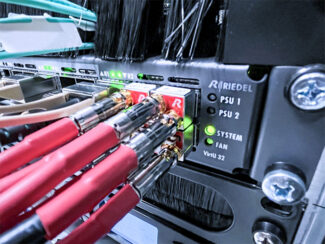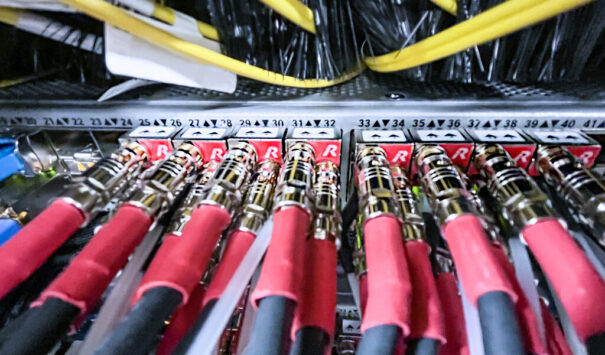Riedel MediorNet Muon, backbone of the new media-over-IP network deployed by TDF
French infrastructure operator and manager TDF has deployed in Paris a multi-client media over IP network based on the Riedel MediorNet Muon technology.
This deployment, custom-designed for the occasion, is adapted to the TDF own operational and service workflows at a time when convergence is key to the success of projects. In fact, MuoN SFPs are enabling the migration of legacy SDI formats using the SMPTE ST 2110 standard to process uncompressed signals.
The Riedel SFP-based MediorNet MuoN IP gateways offer multiple convenient interfaces for converting SDI signals to IP. Thanks to their small form factor (SFP+, SFP28), the 3G/HD-capable MuoN A SFPs can even be installed inside a standard 10GE/25GE IP switch. The software-defined modules are available with a range of different input and output configurations (including BNC, fiber or HDMI) and can be configured to run encapsulations such as SMPTE ST 2110 and ST 2022-6.
 The TDF media over IP network not only features MuoN A-Series SFPs hosted directly on IP switches for HD video resolutions, but also MuoN B-Series SFPs used with the Riedel VirtU 32 aggregator for high-end UHD video processing. With up to two UHD channels per SFP, the granularity of Riedel’s MediorNet MuoN technology allows TDF to scale its network as needed, while decreasing the risks associated with hardware failures. In addition, the Riedel MuoN technology is compatible with the RESTful API, which has made it easier for TDF to tailor the system to its unique needs.
The TDF media over IP network not only features MuoN A-Series SFPs hosted directly on IP switches for HD video resolutions, but also MuoN B-Series SFPs used with the Riedel VirtU 32 aggregator for high-end UHD video processing. With up to two UHD channels per SFP, the granularity of Riedel’s MediorNet MuoN technology allows TDF to scale its network as needed, while decreasing the risks associated with hardware failures. In addition, the Riedel MuoN technology is compatible with the RESTful API, which has made it easier for TDF to tailor the system to its unique needs.
Daniel Rodriguez, director of media innovation programs at TDF, sees Riedel’s MediorNet Muon technology as key to its strategy, “which involves progressively migrating from legacy SDI to IP, at the market’s pace, with minimal risk thanks to its hybrid nature.”
On the other hand, Franck Berger, regional sales director for Southern Europe at Riedel, confesses to be “impressed” with “how quickly and smoothly TDF’s teams adopted our technology and embedded all of its benefits into their tailor-made infrastructure, which allows the company to interconnect their customers throughout third-party datacenters — saving costs on space and power while optimizing the end-to-end signal chain in terms of quality and latency.”
Gostou deste artigo?
Subscreva o nosso Alimentação e você não vai perder nada.
















